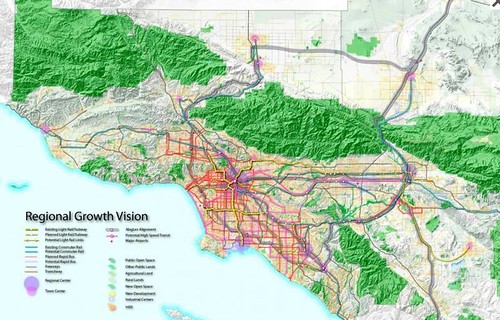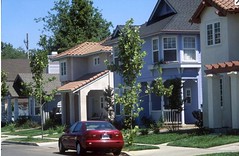California air board sets enforceable targets for smart planning

Posted September 28, 2010 at 1:55PM
In a blog entry posted yesterday, my colleague Amanda Eaken reports on last week’s action by the California Air Resources Board, setting greenhouse gas reduction targets to be met through regional planning. The action was taken under the state’s Sustainable Communities and Climate Protection Act, or SB 375, which requires metropolitan regions to plan land use, transportation and housing investments to accommodate future growth in a manner consistent with addressing global warming.
Shortly before the final vote was taken, CARB member and mayor of Riverside Ron Loveridge stressed the importance of the Board’s action:
“The 21st Century is a century of regions. SB 375 is the first time in my political lifetime that we’ve had a serious regional conversation about urban form.”
While public health, environmental and social equity groups were unanimous in their support of meaningful targets, the building industry was somewhat divided. Meea Kang, president of the California Infill Builders Association, joined several other infill developers to speak in support of ambitious targets, noting that the kinds of walkable, transit-oriented housing that will help regions meet their SB 375 targets is precisely what the market is demanding. Earlier this summer, the Urban Land Institute, a preeminent, multidisciplinary real estate forum comprising local, national and international development industry leaders with nearly 30,000 members worldwide, issued a report providing strong and explicit support for SB375’s planning framework.
How the regions meet the targets is up to them, though the law requires CARB to review and approve the plans, which may include such measures as improving safe routes to schools, better infrastructure for walking and cycling, telecommuting and transportation demand measures and, of course, walkable, convenient neighborhoods that incorporate housing, shops, and services.
Earlier this year, a report indicated that better organized regional growth patterns in California could, by 2050, lower greenhouse gas emissions by 25 percent compared to current trends; reduce cumulative driving by an amount equivalent to taking all cars off California roads for 12 years; save 140 billion gallons of gasoline; save 3700 square miles of forest, farmland and other open space; and save $4.3 billion annually on sprawl-related infrastructure costs, all while accommodating an additional 60 million people and 24 million jobs. That report, Charting our Future, was issued by Vision California, a state-sponsored group funded by the California High Speed Rail Authority in partnership with the Strategic Growth Council (a cabinet-level, statutorily mandated committee).
Congratulations to the Air Resources Board, whose chair, Mary Nichols, noted that this action is “On the right side of history.” And congratulations to everyone who helped make it happen. Read Amanda’s discussion of how it unfolded here.
Move your cursor over the images for credit information.


